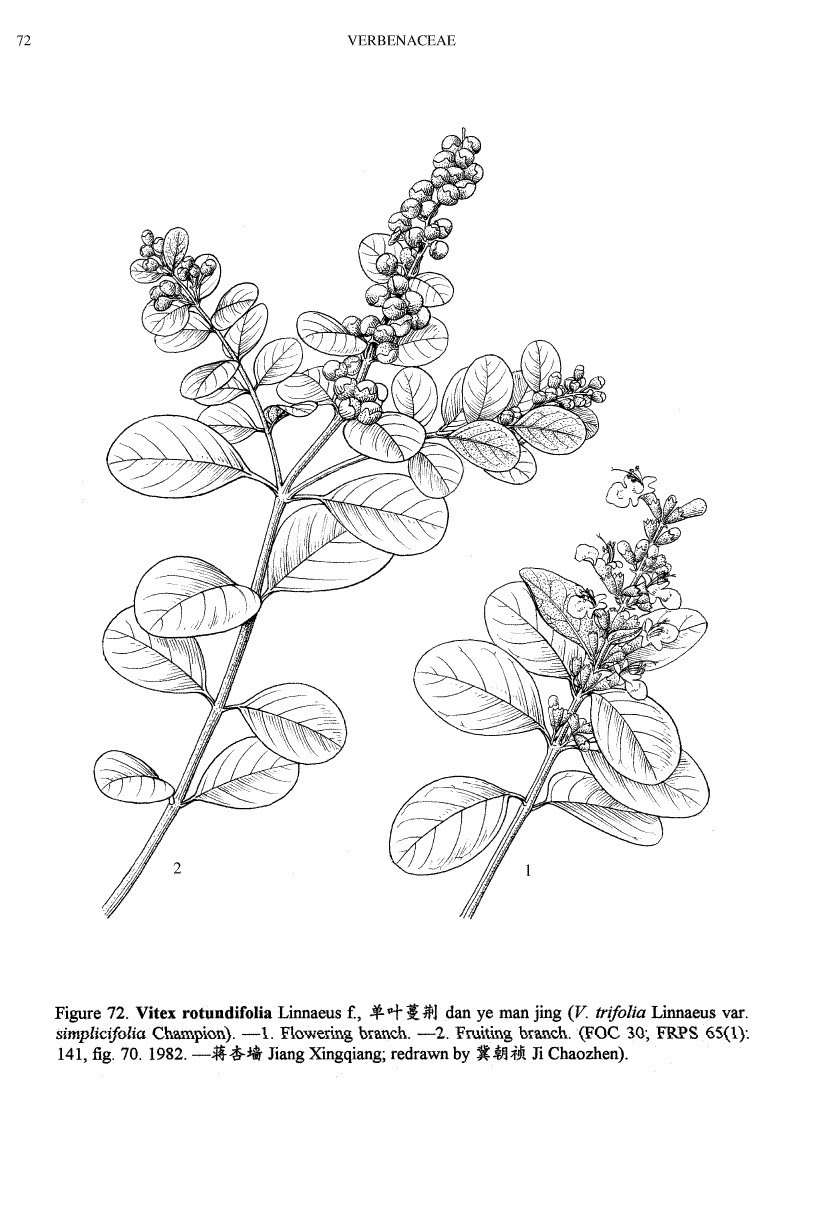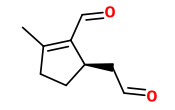Vitex rotundifolia L. f. - Lamiaceae - round-leaf chastetree, beach vitex
Prostrate shrub, up to 1m tall, native to the seashores of the Pacific and Western Indian Ocean; leaves obovate to broadly oblong-elliptic, or circular, adaxially pale dull green, abaxially velvety to silky tomentose; flowers purplish mauve to lilac blue.
http://www.efloras.org/florataxon.aspx?flora_id=2&taxon_id=210002310
„Leaves are strongly aromatic, intensifying when crushed.“
http://en.wikipedia.org/wiki/Vitex_rotundifolia
„Vitex rotundifolia has long been used as a medicinal plant for a headache and a cold, and various compounds such as flavonoid, iridoid glycosides, diterpenoids, and sesquiterpenoids have been identified in this plant (Kimura et al., 1967; Asaka et al., 1973; Tada and Yasuda, 1984). It also has been reported that the leaves and twigs of this plant can be used for repelling mosquitoes… the mosquito-repelling principle
of V. rotundifolia… [was] isolated [as] a new natural cyclopentene dialdehyde named rotundial… the repellency of [rotundial after 2 hours] became higher than that of DEET, indicating that the mosquito repelling activity of rotundial was superior to that of DEET in respect to its long-lasting effectiveness.“
[Potent mosquito repellents from the leaves of Eucalyptus and Vitex plants., Nishimura, H., Satoh, A., In: Biologically active natural products: Agrochemicals, CRC Press, Boca Raton, 1999, 137-146]
[Rotundial, a new natural mosquito repellent from the leaves of Vitex rotundifolia., Watanabe, K., Takada, Y., Matsuo, N., Nishimura, H., Bioscience, biotechnology, and biochemistry, Vol.59(10), 1995, 1979-1980]
The essential oil (0.05%) prepared from V.rotundifolia stems contained manoyl oxide (14.3%), α-terpineol (13.1 %) and α-pinene (10.0 %) as major ingredients; minor constituents were sabinene (5.1%), 1.8-cineole (4.9%) and β-pinene (3.1%).
[Chemical compositions and anti-inflammatory activities of essential oils from Aster spathulifolius and Vitex rotundifolia maxim., Kim, C., Bu, H.J., Lee, S.J., Hyun, C.G., Lee, N.H., Journal of Applied Pharmaceutical Science Vol, Vol.4(10), 2014, 12-15]
http://japsonline.com/admin/php/uploads/1342_pdf.pdf
„The fruits of Vitex rotundifolia L. are used as a traditional medicine in China. Dried fruits of V. rotundifolia (rich in essential oils) have been known to show strong estrogenic activity… The chemical composition of 40 compounds was determined and this represented 84.1% of the total oil which was characterized by a high content of unsaturated fatty acids (54.84% of total oil). The oil contained mainly linoleic acid (47.46%), palmitic acid (5.18%), untriacontane (2.28%), bicetyl (2.61%) and stearic acid (2.2%). The essential oil strongly stimulated the proliferation of MCF-7 cells, and this effect was significantly inhibited by the specific estrogen receptor antagonist ICI 182,780.“
[Estrogen-like activity of volatile components from Vitex rotundifolia L., Hu, Y., Hou, T., Xin, H., Zhang, Q., Zheng, H., Rahman, K., Qin, L., Indian Journal of Medical Research, Vol.126(1), 2007, 68]
„The fruits of V. rotundifolia have been used as a folk medicine for the treatment of headache, cold, migraine, eye pain, female hormonal disorders, asthma, chronic bronchitis, and gastrointestinal infections such as bacterial dysentery and diarrhea.“
[The genus Vitex: A review., Rani, A., Sharma, A., Pharmacognosy reviews, Vol.7(14), 2013, 188]
http://www.ncbi.nlm.nih.gov/pmc/articles/PMC3841997/

drawing from Flora of China

